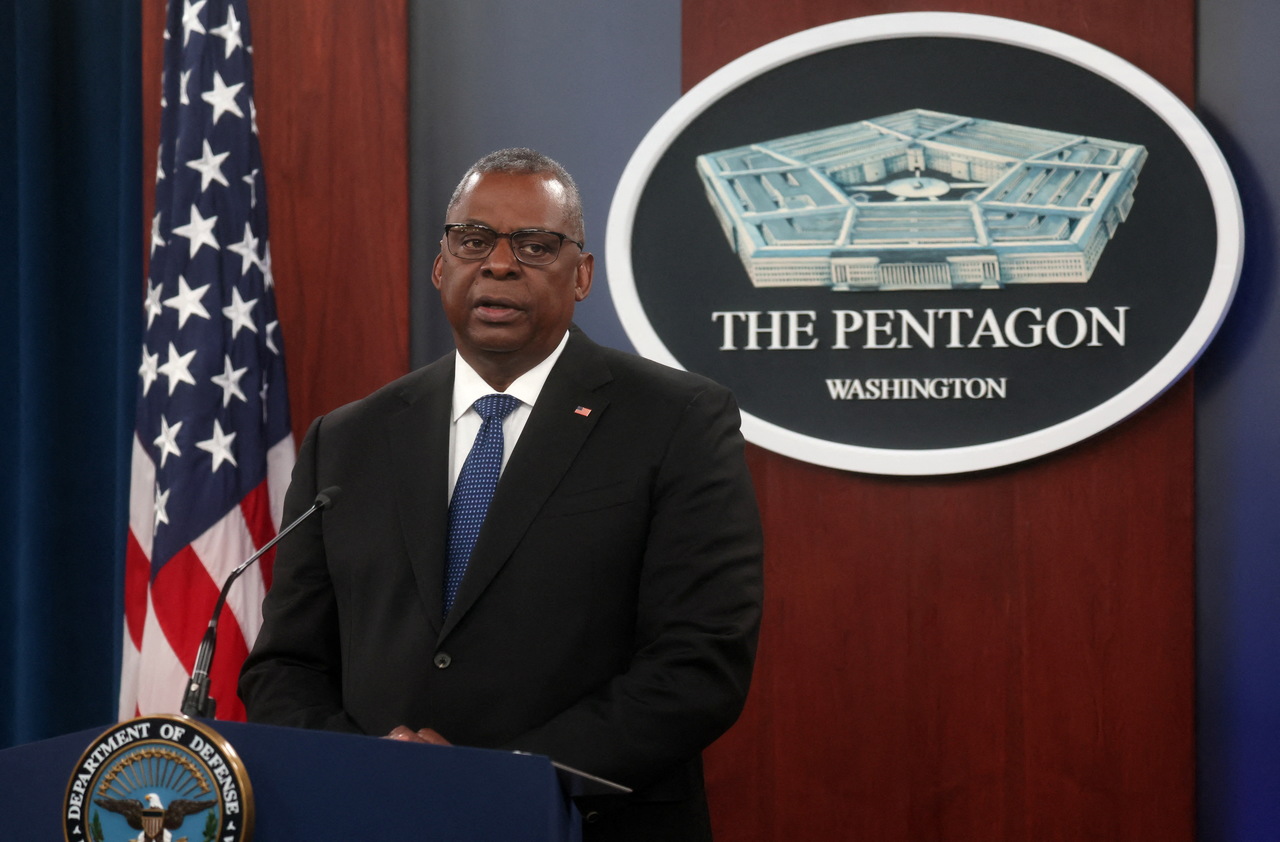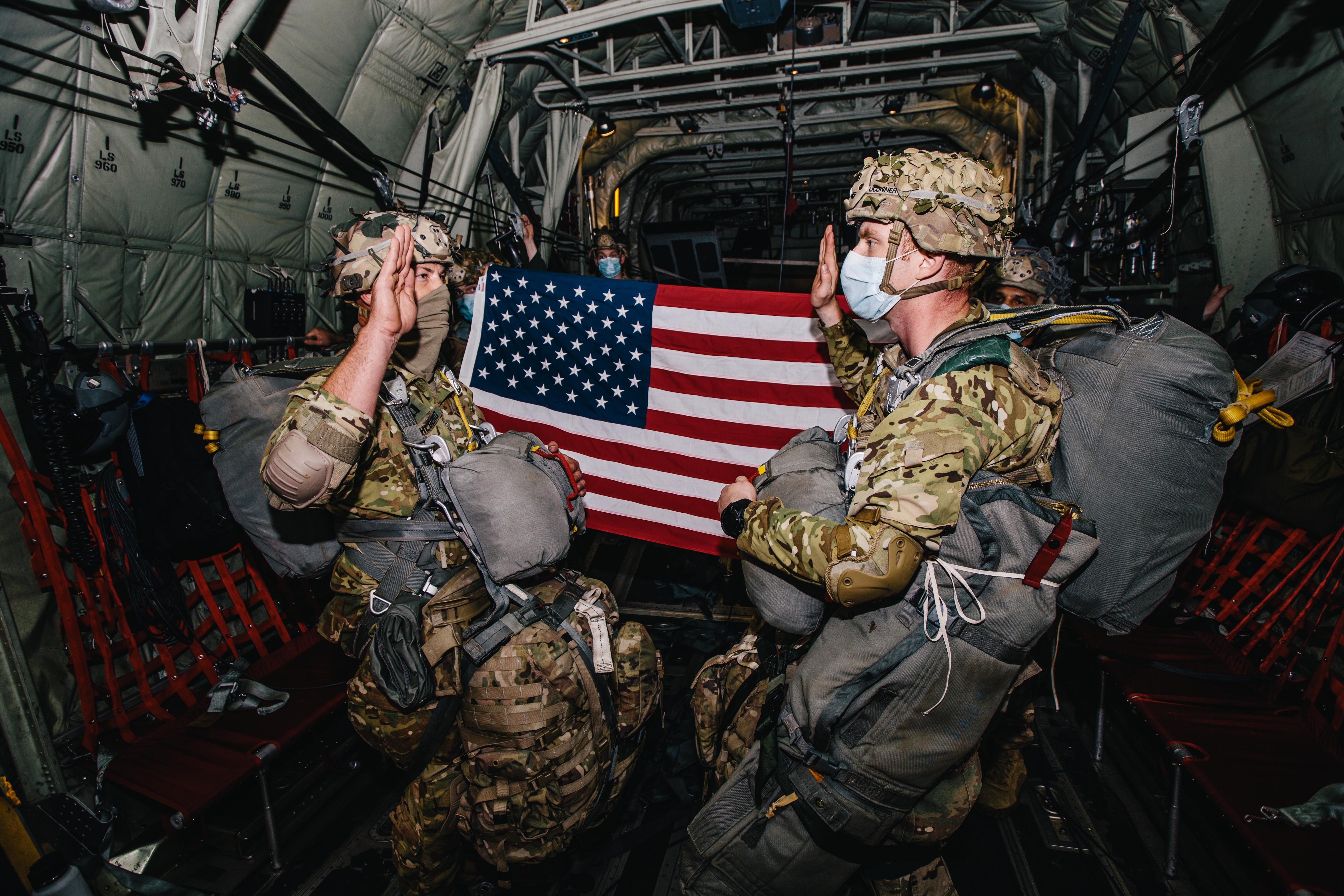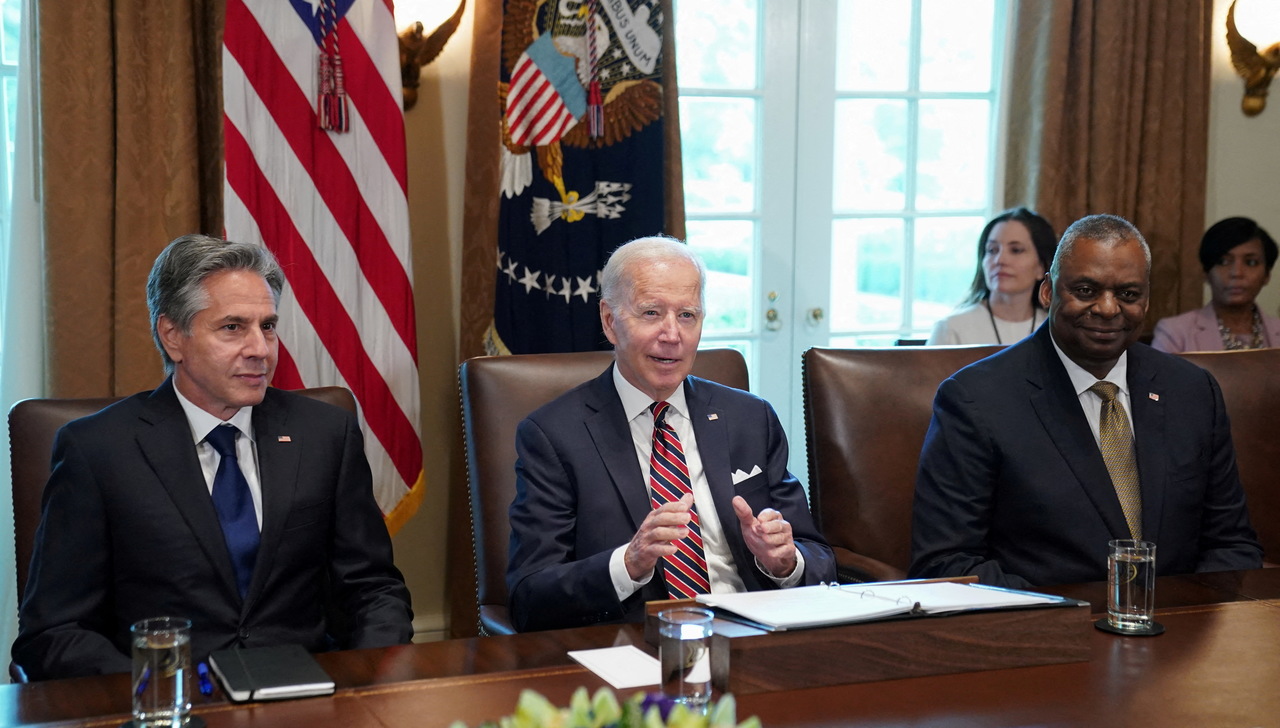U.S. National Defense Strategy Prioritises Deterrence of China, Then Russia
The new U.S. defence strategy prioritises the competition with China more clearly than previously and puts deterrence of Russia second. The U.S. is to still contribute to NATO with advanced capabilities but also is seeking a substantial increase in the conventional defence potential of the rest of the Allies. This is to strengthen deterrence by ensuring that NATO is able to defend against Russian aggression even if a majority of U.S. forces are engaged in a conflict in the Indo-Pacific.
 LEAH MILLIS/Reuters/Forum
LEAH MILLIS/Reuters/Forum
On 27 October, the U.S. Department of Defense published the unclassified version of the new National Defense Strategy (NDS). It elaborates on the military-related assumptions of the new National Security Strategy and replaces the Trump administration’s NDS from 2018. Concurrently with the NDS, the Pentagon presented the results of its nuclear policy and missile defence reviews.
Threats and Challenges
The Biden administration sees the global security environment deteriorating. The NDS prioritises China as the most serious challenge to the U.S. It describes that country as the only one with both the intent to reshape the international order and the (increasing) military and non-military power to do so. The NDS identifies Russia as a secondary but “acute” threat, citing its invasion of Ukraine and desire to fracture NATO. The focus on the deterrence of China is articulated much more clearly in the new document than in the one published in 2018. While Trump’s NDS signalled that China would be a larger challenge for the U.S. in the longer term than Russia, it assigned the priority to a “strategic competition” with both countries.
The new NDS warns that China and Russia have been tightening their relationship and might try to take advantage of the engagement of U.S. forces in a conflict with one of them to engage in aggression in another region. The NDS underscores that China has been rapidly modernising and expanding its nuclear and non-nuclear forces, mainly increasing its ability to act in the Indo-Pacific, but also globally. In addition to Russia’s nuclear arsenal, the NDS pays attention to its long-range cruise missiles, underwater systems, and vaguely indicates that Russia possesses capabilities related to chemical and biological warfare. It also lists Russian and Chinese tools that could be used in an armed conflict and have already been used short of open hostilities, including in cyberspace, space, and for disinformation. The NDS notes that both countries are capable of conducting various attacks against U.S. territory, including to impede the American military response to regional aggression.
Like in 2018, the new NDS further lists threats from North Korea (nuclear and missile forces capable of striking neighbours and the U.S.), Iran (improvements in the ability to produce a nuclear weapon, possession and proliferation of missiles and drones, destabilisation of the Middle East), and global terrorist groups. It assesses the latter as weakened but able to quickly reconstitute.
The new strategy also adds climate change and pandemics as challenges for the armed forces. They will have to adapt to these phenomena to operate and may be tasked with countering their consequences. Climate change may also lead to intensified competition in some regions (especially in the Arctic) and armed conflicts. Unlike the previous NDS, the new document emphasises the need to avoid accidental escalation.
U.S. Defence Planning
Carrying over from 2018, the new NDS envisages U.S. armed forces as being able to simultaneously prevail in one major conflict and deter aggression in other regions. It invariably prioritises the enhancement of the ability to rapidly deploy bigger forces from the U.S. in a crisis. The regional activity of U.S. forces in peacetime is still seen as important, although it is to eventually focus on a “more narrow set of tasks” than currently. This appears to be related first and foremost to suggestions that the U.S. further cut down its military presence in the Middle East.
The unclassified version of the NDS once again does not set a target for the size of the armed forces. It puts the emphasis on their quality, including by prioritising the enhancement of long-range strike capabilities, quick threat detection, and resilience to various attacks. The NDS attaches special importance to investments in emerging technologies (such as artificial intelligence), the introduction of new capabilities (for example, hypersonic weapons and autonomous vehicles), and strengthening of cyber and space forces. The Trump administration shared these goals but also increased the size of the military, albeit to a much lesser degree than it planned. It eventually prioritised research and development of next-generation systems. Biden’s budget proposals double down on the latter approach at the cost of decreasing the Army (from 485,000 to 473,000 troops), accelerated retirement of older ships and aircraft, and by delaying the expansion of the Navy.
Integrated Deterrence
The NDS promises better, coordinated use of various military and non-military tools under an approach dubbed “integrated deterrence”. This is especially to deter aggression in other regions should U.S. armed forces already be engaged in one conflict. The NDS pledges to strengthen cooperation with U.S. allies, including in support for building their own defence capacity and resilience (e.g., through joint capability development and planning). The strategy also points out that the U.S. could use various tools to punish aggressors. It refers especially to maintaining the option of using nuclear weapons in response to some non-nuclear attacks (in a “narrow range” of contingencies), the possible use of other available capabilities (including in cyberspace and space, and long-range conventional strikes) and sanctions.
Earlier U.S. strategic documents already made similar assumptions. Their stronger articulation in the new NDS is an additional effort to deter adversaries, mobilise allies, and improve cooperation between various parts of the armed forces and the U.S. government itself.
Approach to NATO
The NDS reaffirms the U.S. commitment to NATO. It pledges to strengthen NATO nuclear deterrence and focus U.S. non-nuclear forces in Europe on command-and-control assets, missile and artillery systems, and support units. U.S. capabilities are to complement those of other allies. The NDS calls for—in more detail than in 2018— strengthening Allied forces to defend against Russia. It prescribes especially Allied investments in air forces, precision strike systems, intelligence, surveillance and reconnaissance, and electronic warfare. It additionally commits to cooperate with Allies and partners from NATO’s Eastern Flank in enhancing their defensive anti-area/access-denial capabilities (presumably including air defence), warning systems, and resilience against hybrid and cyberattacks, and by expanding exercises. The NDS also declares support for these countries in building (unspecified) capabilities to punish an aggressor.
Conclusions and Perspectives
Compared to the previous NDS, the new U.S. defence strategy puts greater emphasis on the deterrence of China and burden-sharing by allies. This reflects trends that have been growing in U.S. security policy and internal discussions since the presentation of the 2018 NDS. They result from the growth in China’s potential and issues with financing the quantitative expansion of the U.S. armed forces.
In practice, the U.S. wants the allies to strengthen their armed forces to the extent that would allow NATO to defend against Russian aggression even in case of simultaneous involvement of most of U.S. forces in a war in the Indo-Pacific. In such a scenario, the U.S. support for NATO would still include unique and technologically advanced capabilities but would be substantially limited in quantity. The possibility of a severe (especially nuclear) escalation would still have special importance for deterring Russia, but its consequences could also affect the U.S. and NATO. Moreover, it is possible that the Russian propensity for risk-taking will grow. For all these reasons, it is in the interest of NATO countries to further enhance deterrence by developing more proportional and credible response options, particularly forward defence.
In light of the NDS, one can expect a qualitative strengthening of U.S. forces continuously present in Europe (with new types of arms and equipment), but not a substantial increase of their numbers over decisions announced at the recent NATO summit in Madrid. Additionally, the U.S. has been extending the presence of forces temporarily deployed to Europe, including Poland, in response to the Russian invasion of Ukraine, but it will likely seek to reduce them over time.





